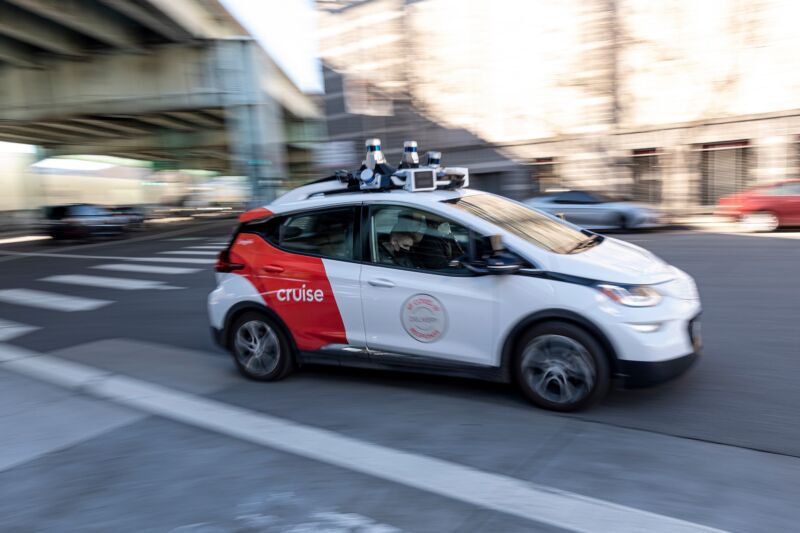Do Cruise’s AVs brake-check other drivers? Feds are investigating [Updated]

Enlarge / A Cruise vehicle on the streets of San Fransisco. (credit: David Paul Morris/Bloomberg/Getty Images)
Update, 1:37 pm ET: Cruise reached out to Ars with the following statement: "Cruise's safety record is publicly reported and includes having driven nearly 700,000 fully autonomous miles in an extremely complex urban environment with zero life-threatening injuries or fatalities. This is against the backdrop of over 40,000 deaths each year on American roads. There's always a balance between healthy regulatory scrutiny and the innovation we desperately need to save lives, which is why we'll continue to fully cooperate with NHTSA or any regulator in achieving that shared goal."
Original story: The National Highway Traffic Safety Administration is looking into Cruise's robotaxis after several crashes involving the autonomous vehicles being rear-ended. NHTSA's Office of Defects Investigation has opened an investigation into the General Motors-backed autonomous driving startup's automated driving system and a possible propensity to brake inappropriately hard if another vehicle approaches quickly from behind. NHTSA's ODI is also looking into incidents where Cruise's AVs have stopped and become immobile road hazards.
Cruise is one of the leading AV developers, and along with Alphabet's Waymo, it has deployed actual driverless robotaxis, albeit on a small scale so far. It's developing a futuristic box-on-wheels called the Origin, which it hopes to have running on the road sans steering wheel in 2023. But for now, the company is testing on the streets of San Francisco with modified Chevrolet Bolt EVs.